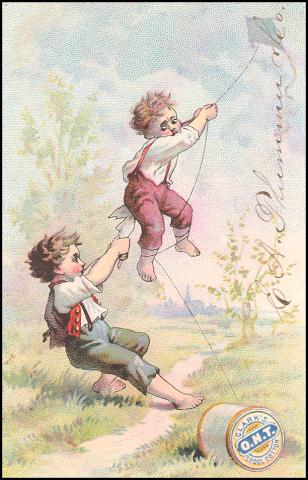
According to some accounts, Benjamin Franklin conducted his now famous, possibly apocryphal, electrical experiment with a kite in a lightning storm on this date, June 15, in 1752.
Modern accounts of Franklin’s experiment are based primarily on a 1767 publication by Franklin’s friend and colleague, Reverend Joseph Priestly. Franklin himself left no known writings documenting his own attempts to conduct the experiment, though he did write about how the experiment might be conducted and wrote about others doing so.
Some of these others were ill-advised, like Georg Wilhelm Richmann, a Russian physicist whose experiments with atmospheric electricity resulted in his death on August 6, 1753. Reportedly, Franklin’s success in surviving to tell his tale was attributable to his taking cover and making use of a dry silk ribbon between himself and the kite string, which insulated him from the electric charge, as well as to the gathered electricity being sourced from the storm's ambient electrical charge, rather than a direct lightning strike.
One thing, however, is certain. Don’t try this at home, kids.
In the spirit of getting into trouble (real or theoretical) with kites, here's a ca. 1890 advertising card from the Clark Thread Company, a thread manufacturer of founded in Scotland in the 1750s, but which established a factory in East Newark, New Jersey in 1863. The company was once the largest threadmaker in the nation.
The company also manufactured and sponsored Clark’s Our New Thread (O.N.T.). As a product, the thread was specifically manufactured for use with sewing machines. As a sponsorship, O.N.T. was one of the most successful American soccer clubs of the late 1880s. The team, founded in 1883, also made a name for itself as a successful baseball team and a mediocre cricket team.
Clark merged with competitor J&P Coats in 1897. While the brand name of Coats & Clark is still extant today, the company underwent a series of mergers over the course of the 19th through 21st centuries that included relocating manufacturing to the American South in the 1930s. As of 2015, the brand was on the market under the Coats Group, a subsidiary of Guinness Peat.
This advertisement is part of Hagley Library’s Fingerman collection of ephemera (Accession 2009.213), a varied collection of mixed format American advertising ephemera collected by Arlene and Gerald Fingerman. This collection of 531 items has not been digitized in its entirety, but our Digital Archive offers a selection of 142 curated items that can be viewed online now by clicking here.

